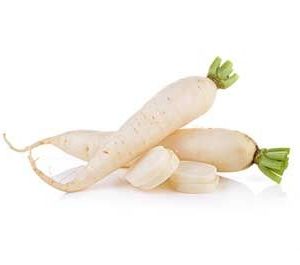An aquatic plant found near springs and slow-moving streams, watercress is an often-overlooked, leafy green food source that belongs to the mustard family. An attractive, succulent plant, watercress bears small, round and wavy-edged leaves, which produce tiny white flowers from March through October. Watercress has been cultivated in Europe and Asia, and is even used by aquatic life for sustenance.
One of the best culinary aspects of watercress is its versatility. It can be added to salads, steamed, and used in soups for a subtle, peppery flavor. It’s also a standard ingredient for sandwiches in Britain, usually eaten alongside tea.
Because watercress grows in water, it should be washed thoroughly in cool water to remove dirt, and then patted dry with a paper towel. For optimum freshness, watercress can be submerged in water and stored in the refrigerator for up to five days.
Health Benefits of Watercress
Watercress earned its reputation as a healing herb quite early. Around 400 BC, Hippocrates located his first hospital on the island of Kos close to a stream to ensure that fresh watercress would be available for treating patients. In the 1700s, Nicholas Culpeper, author of “The Complete Herbal,” believed watercress could cleanse the blood. Watercress is very low in calories, and contains antioxidants to protect your health. Gluconasturtiin, a glucosinolate compound, is one of them; It provides phenethyl isothiocyanates which may help reduce the risk of lung cancer.
Potassium is one of the most abundant nutrients in watercress, with 330 milligrams per 100-gram serving. Proper intake of this nutrient is associated with better heart health. There’s also vitamin C, with 43 milligrams of the same serving size, closely followed by vitamin A with 160 micrograms. Vitamin C provides top-notch infection-fighting power to stave off colds and the flu, helps maintain healthy connective tissue and manages mild iron deficiency anemia. Vitamin A, also known as retinol, is essential for a properly functioning immune system and produces pigments in the retina of the eye, an absence of which may cause night blindness.
Manganese, a cofactor for the antioxidant enzyme superoxide dismutase, and calcium, essential for strong bones and teeth, are both available when you eat watercress. Antioxidant flavonoids like zeaxanthin and lutein protect your eyes. B-complex vitamins include riboflavin, niacin, vitamin B6 (pyridoxine), thiamin and pantothenic acid, all important for keeping your cellular metabolic functions at peak performance. For additional information regarding watercress, you may refer to the table below.
| Watercress Nutrition Facts
Serving Size: 3.5 ounces (100 grams), raw |
||
| Amt. Per Serving |
% Daily Value* |
|
| Calories | 11 | |
| Calories from Fat | 0 | |
| Total Fat | 0 g | |
| Saturated Fat | 0 g | |
| Trans Fat | ||
| Cholesterol | 0 mg | |
| Sodium | 41 mg | |
| Total Carbohydrates | 1.29 g | |
| Dietary Fiber | 0.5 g | |
| Sugar | 0 g | |
| Protein | 2.3 g | |
| Vitamin A3191 IU | Vitamin C | 43 mg |
| Calcium120 mg | Iron | 0.2 mg |
Studies Done on Watercress
Eating watercress daily may have the ability to significantly reduce DNA damage to blood cells and further to resist DNA damage caused by free radicals, according to a two-year research project at the University of Ulster.
Scientists examined a watercress-derived compound called phenethyl isothiocyanate (PEITC) and found significant anticancer properties. Single blind, randomized and crossover trials involved 60 healthy men and women eating about 1 1/2 cups of fresh watercress daily for eight weeks. Positive results included a reduction in blood triglyceride levels by an average of 10%, and a significant (33% to 100%) increase in lutein and beta-carotene content, associated, with higher intake levels, in a lowered incidence of eye diseases such as cataracts and macular degeneration.
Scientific research found that the PEITC in watercress may suppress breast cancer cell development. Studies at the University of Southampton study found PEITC may starve tumor growth of blood and oxygen by “turning off” a signal in the body. Researchers explained that “as tumors develop, they rapidly outgrow their existing blood supply so they send out signals that make surrounding normal tissues grow new blood vessels into the tumor, which feed them oxygen and nutrients.”
Watercress Fun Facts
You could call watercress the first fast food. It was a free and important source of sustenance among the working class in England during the 19th century. Given the nickname “poor man’s bread,” bunches were often rolled into a cone and eaten as an on-the-go breakfast sandwich.
Summary
A nutrient-rich perennial plant growing naturally around slow-moving water sources, watercress has been known for centuries as an exceptionally nutritious herb for both eating and healing. Used in sandwiches, salads and steamed as a side dish, it adds a tangy, peppery flavor as well as a plethora of minerals and vitamins.
Previously mentioned studies noted that the nutrients in watercress may help strengthen bones, limit neuronal damage, fight infection, help maintain healthy connective tissue and prevent iron deficiency. In addition, the PEITC in watercress may suppress breast cancer cell development and prevent DNA damage in cells.
You can find this oft-overlooked leafy green in most supermarkets, so give it a try when you make your next green salad or sandwich. Remember, watercress from stagnant water may host harmful parasites or pathogens, so be sure to rinse and soak well before eating.







Reviews
There are no reviews yet.